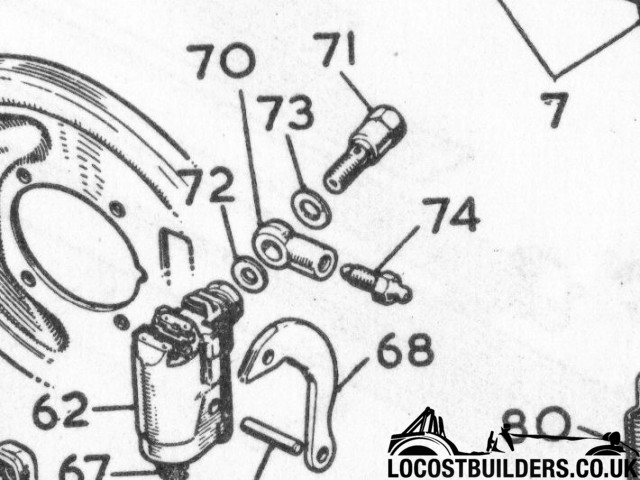Canada EH!
|
| posted on 22/5/13 at 05:02 PM |

|
|
Spridget brake bleeding
My son just acquired a restored but not fully assembled 1958 Sprite. Having grown up in a word of compute controlled automobiles he is at a complete
lose as to what to do so, brought it to dad who had two of them back in the day, one modified to fast road spec, and the other with a Volvo 1800
engine and gear box.
The grey cells are having a problem remembering how to bleed the single input rear brake cylinders.
The previous owner has installed a fitting from the MK 2 Midget which has a bleed screw at the attachment point of the brake line to the cylinder, but
this is at the bottom of the cylinder.
The front brakes have been changed to disk also with the bleed screw at the bottom, these have been switched side to side with the bleed screws now on
the top and I am getting some pedal pressure but there is still air in the system, probably in the rear cylinders.
Short of removing the rear cylinders, holding them with the bleed screw up, bleeding them and re-installing them are there any words of wisdom from
the mass of knowledge on this site?
|
|
|
|
|
britishtrident
|
| posted on 22/5/13 at 06:47 PM |

|
|
Is it a Lockheed single piston floating light alloy wheel cylinders ? or Lockheed cast Iron/Steel double piston wheel cylinders with a small
bleed nipple held in by a "C" clip ?
If the earlier single piston cylinders ISTR the piston and handbrake mechanism goes to the bottom of the cylinder, the bleed nipple goes into
the centre bolt of a banjo fitting ---- more or less the same as Morris Minor and Austin A40 Farina With this type of Lockheed brake it is
especially vital to adjust the brake up via the hole in the brake drum before bleeding. ISTR Threads on the brake fittings of this type should be
BSF.
Bleeding follows normal procedure start at the rear -- doesn’t matter what side, slow strokes (especially on the return stroke) and hold the pedal
down on last stroke while the nipples is closed.
The later twin piston wheel cylinder should only be able to fit into the back plate one way as it is located by roll pin which acts as a dowel
and bleed nipple pokes through it's own small hole in the back plate. This type of system is not dissimilar to the rear of the (real) Mini,
again adjusting the brake shoes will push the wheel cylinder pistons in fully making bleeding easier. Threads on this system should all be UNF
[Edited on 22/5/13 by britishtrident]
[Edited on 22/5/13 by britishtrident]
[I] “ What use our work, Bennet, if we cannot care for those we love? .”
― From BBC TV/Amazon's Ripper Street.
[/I]
|
|
|
britishtrident
|
| posted on 22/5/13 at 07:01 PM |

|
|
Found this --- think it is the left side for an MG TD or TF but system is much the same I got the detail of the banjo and nipple slightly
wrong.
If you undo the banjo you will probably have to remove the copper washers and either replace or re-anneal them.

[Edited on 22/5/13 by britishtrident]
[I] “ What use our work, Bennet, if we cannot care for those we love? .”
― From BBC TV/Amazon's Ripper Street.
[/I]
|
|
|
Canada EH!
|
| posted on 22/5/13 at 07:17 PM |

|
|
Lockheed alloy cylinder, bled the system with vacuum bleeder on each wheel starting with right rear (LHD), will try the old 2 man system, (son lives
100 miles away) when he gets back up here.
The adjusters were set with the shoe tight against the drum.
Thanks for the quick response, there will be more questions before this project is done and I get back to the Locost
|
|
|
Bare
|
| posted on 23/5/13 at 01:53 AM |

|
|
Reverse Bleed!
Take a disposable 2 oz Syringe Full of Fresh Fluid attach it to the bleeder nipple then Slooooly force feed the entire contents of the syringe into
the Brake piston and or caliper. Start at furthest cyl from Master.
It's sloow but it Works! ...perfectly.
|
|
|













